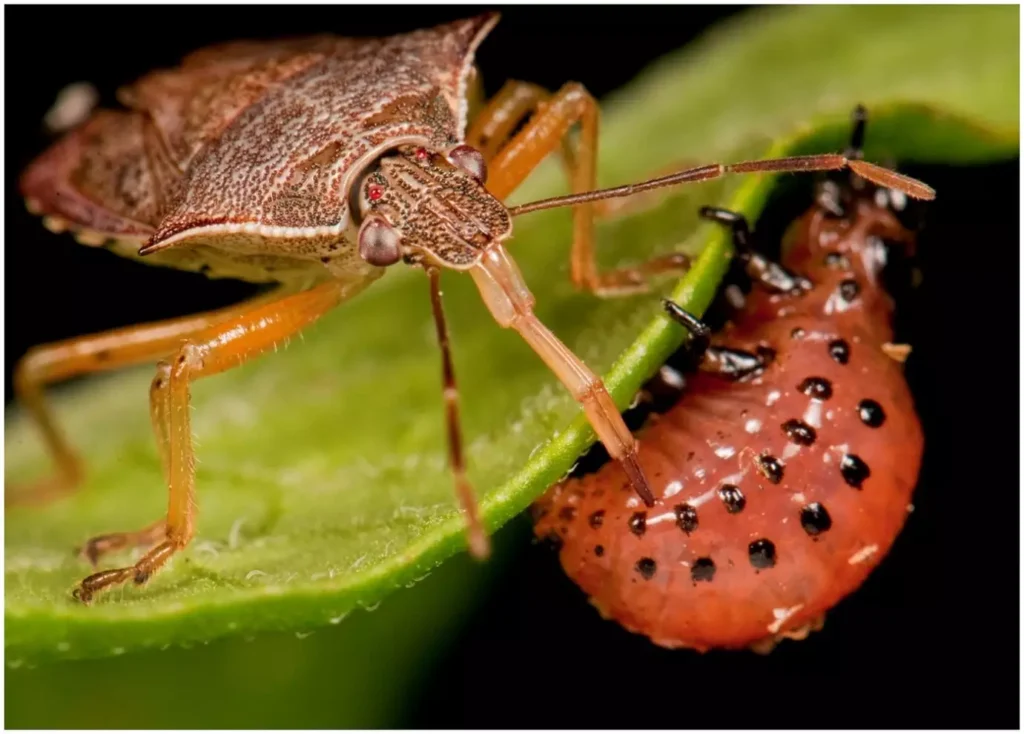A collaborative effort between scientific institutions has recently led to the development of a sustainable pheromone dispenser aimed at reducing pest control costs for farmers.
About Pheromones
- Definition: Pheromones are chemical signals that trigger specific responses or behaviors in members of the same species, which can include attracting mates or repelling rivals.
- Sources: These chemicals can be found in-
- Body fluids (e.g., urine, sweat)
- Specialized exocrine glands
- Genital mucous secretions
Features
- Unique Activity: Pheromones provide a distinct mechanism of action compared to traditional insecticides.
- Zero Residue Product: They leave no harmful residues on crops.
- Excellent Toxicological Profile: Pheromones are safe for the environment and non-target species.
- Very Low Use Rates: Minimal quantities are effective in controlling pest populations.
Benefits
- Integrated Pest Management (IPM): Suitable for inclusion in IPM strategies and insecticide resistance management programs.
- Organic Production: Ideal for organic fruit farming practices.
- Species-Specific Action: Targeted approach that specifically affects the pests needing control.
- Safety for Non-Target Species: No significant acute toxicity to mammals and safe for beneficial insects.
- Low Resistance Development: The natural mode of action reduces the likelihood of resistance developing in pest populations.
Mode of Action
- Disruption of Mating Cycle: Pheromones disrupt the natural mating behaviors of pests rather than altering their biochemistry.
- Sex Pheromones: Female insects release sex pheromones to attract males. BASF utilizes straight-chain lepidopteran pheromones that mimic these natural chemicals.
- Pheromone Cloud: These synthetic pheromones create a “cloud” in the environment, disorienting male insects and preventing them from locating females for mating.
About the Sustainable Pheromone Dispenser:
- Purpose: Designed to manage pests effectively while minimizing costs and labor for farmers.
Key Features:
- Controlled Release Rate: The dispenser ensures a steady release of pheromones, addressing the instability issues seen in traditional dispensers.
- Material Used: Incorporates a mesoporous silica matrix, allowing for:
- Higher holding capacity of pheromones.
- Consistent release rates unaffected by external conditions such as temperature.
- Behavioral Modification: Released pheromones alter the behavior of target insect species, attracting them to sticky traps for effective control.
Benefits for Farmers
- Reduced Workload: Longer intervals between dispenser replacements decrease manual labor.
- Cost Efficiency: Requires a smaller quantity of pheromone, leading to lower costs and sustainable practices.
- Enhanced Efficacy: Proven effectiveness in attracting pests comparable to existing commercial products but using less pheromone.
Implications for Sustainable Agriculture:
- Alignment with Sustainable Development Goals: This innovation supports SDG 2 (Zero Hunger) by promoting sustainable agricultural practices.
- Future Prospects: Plans to extend the technology’s reach across India and potentially to global markets.
Ref: Source
| UPSC IAS Preparation Resources | |
| Current Affairs Analysis | Topperspedia |
| GS Shots | Simply Explained |
| Daily Flash Cards | Daily Quiz |
Frequently Asked Question:
What are pheromones?
Pheromones are chemical signals that trigger specific behaviors or responses in members of the same species, such as attracting mates or repelling rivals.
How do pheromones help in pest control?
Pheromones disrupt the mating cycle of pests by disorienting males, preventing them from locating females, which reduces pest populations.
What is the benefit of the sustainable pheromone dispenser?
The dispenser provides controlled pheromone release, lowering pest control costs, reducing manual labor, and ensuring long-lasting effectiveness.
How do pheromones contribute to sustainable agriculture?
Pheromones offer a zero-residue, eco-friendly pest control method, aligning with sustainable agricultural practices and supporting biodiversity.
What is the significance of sex pheromones in pest management?
Female insects release sex pheromones to attract males, and synthetic versions are used to disrupt mating and control pest populations.




